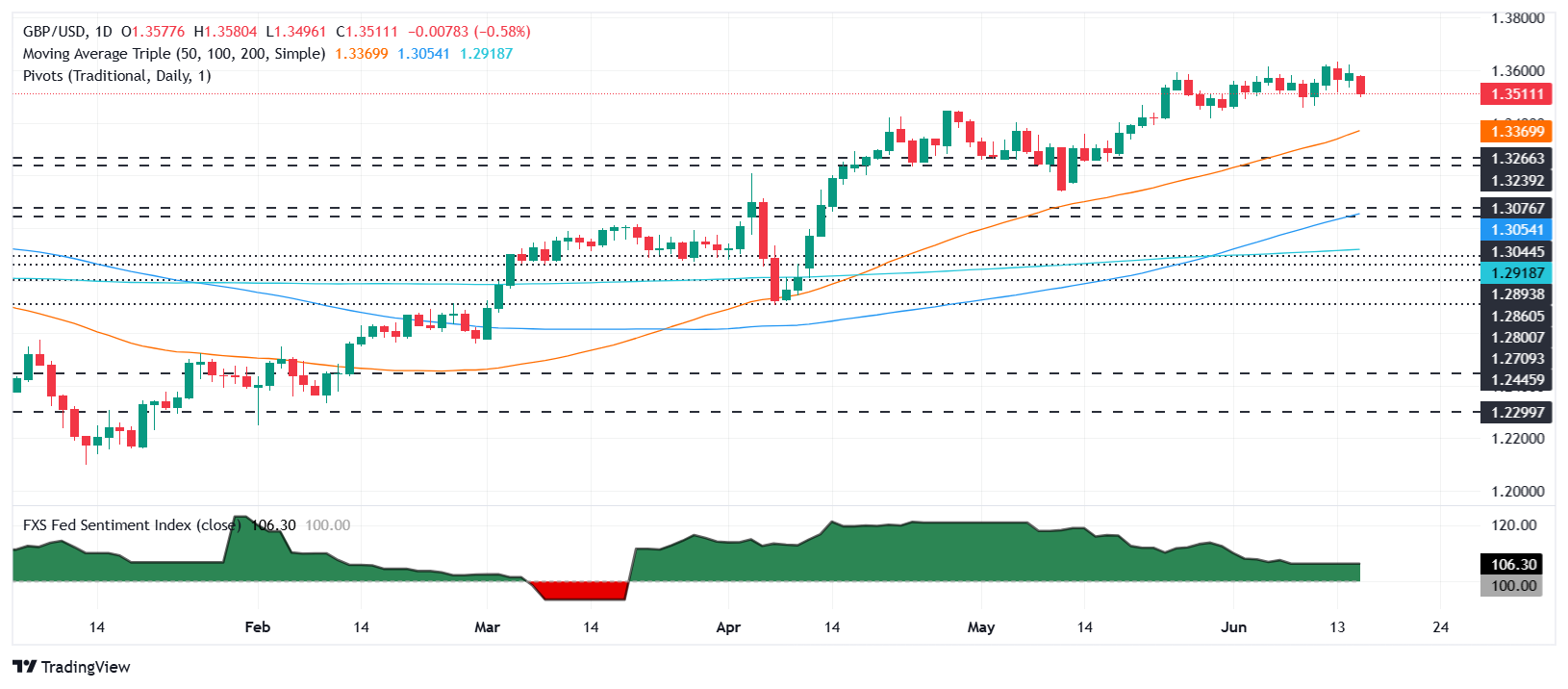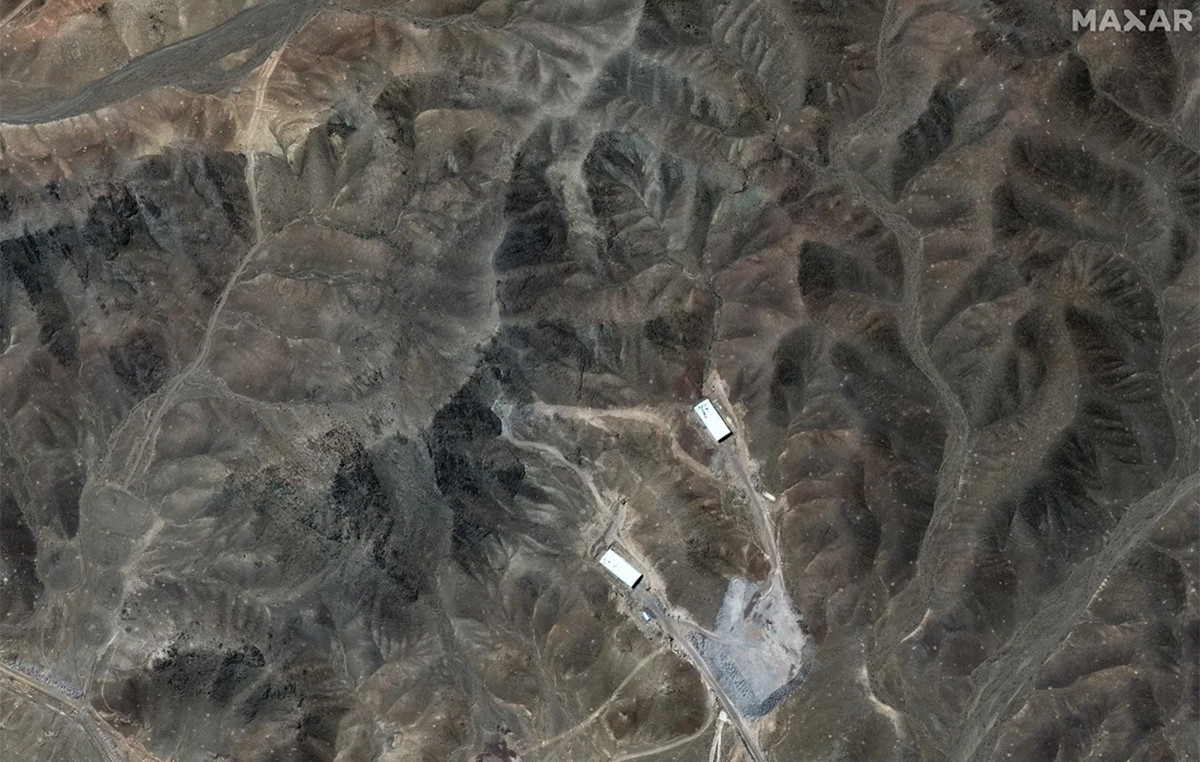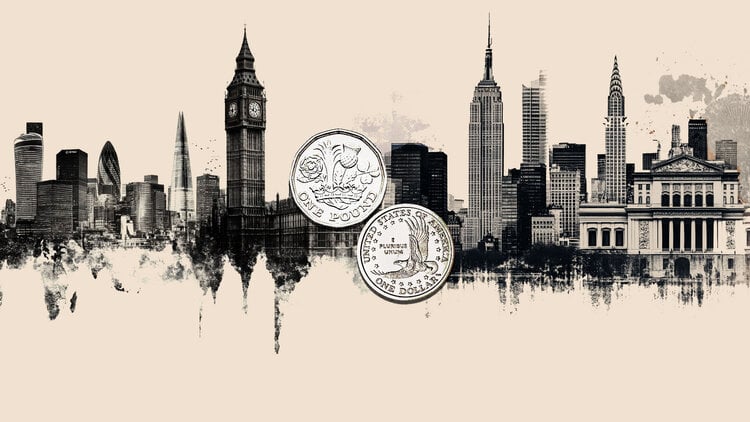- La Libra falls to 1,3498 while Trump considers military support for Israel against Iran.
- Flows to safe shelters raise the US dollar; The DXY rises to 98.43 despite the weak US data.
- Fed and BOE policy decisions under the sight; The difference in interest rates still favors the dollar.
The GBP/USD collapsed below the figure of 1,3500 for the first time in the week, falling more than 0.39%, since the tensions in the Middle East remained high, with news sources revealing that the United States (USA) is weighing whether to join Israel in its confrontation with Iran. At the time of writing, the Par quoted in 1,3515, having previously reached maximum daily of 1,3579.
The pound collapses more than 0.5% in the midst of the growing demand of the US dollar and the growing tensions in the Middle East
Geopolitical risks are promoting the US dollar, which, according to the US dollar index (DXY), which tracks the yield of the dollar against six currencies, has risen 0.31% to 98.43. On Monday, the president of the USA, Donald Trump, recommended the Iranians in Tehran Evacuar while abruptly left the G7 meeting in Canada.
According to Politico, the US president, Donald Trump, is evaluating “whether to join the bombing of Iran by Israel.” The source revealed that “Trump has been consistent in that Iran cannot have a nuclear bomb. Given the situation of Iran’s aerial defenses, there are many options …”
Meanwhile, GBP/USD operators are waiting for monetary policy decisions of the Federal Reserve (FED) and the Bank of England (BOE). They are expected to keep the rates without changes, although the interest rates differential favors the US dollar.
As for the data, the US Agenda indicated that retail sales were contracted in May due to a decrease in the purchases of important vehicles. Sales fell 0.9% month by month, which was below the 0.7% forecast. In the twelve months to May, sales drastically increased 3.3%, leaving 5% in April.
Industrial production in the US sank for the second time in three months, failing in the expansion forecasts of 0.1%, and fell by -0.2% month to month.
On the other side of the Atlantic, the agenda was empty, although there were advances in the conversations between the US and the United Kingdom in the G7. The president of the United States, Donald Trump, signed an agreement that reduced some tariffs on imports from Great Britain while both parties continued committed to a formal commercial agreement.
GBP/USD price forecast: technical perspective
With the pair overcoming 1,3500, the GBP/USD could be aimed at a setback, opening the door to challenge the minimum oscillation of May 29, 1,3414. Once decisively exceeded, the following support would be the Simple Mobile (SMA) of 50 days in 1,3365.
On the contrary, if the GBP/USD recovers the 20 -day SMA in 1,3544, a 1,3600 test is expected. A rupture of this last will expose the annual maximum of 1,3631.

LIBRA ESTERLINA FAQS
The sterling pound (GBP) is the oldest currency in the world (886 AD) and the official currency of the United Kingdom. It is the fourth most commercialized currency exchange unit (FX) in the world, representing 12% of all transactions, with an average of $ 630 billion a day, according to data from 2022. Its key commercial peers are GBP/USD, which represents 11% of FX, GBP/JPY (3%) and EUR/GBP (2%). The sterling pound is issued by the Bank of England (BOE).
The most important factor that influences the value of sterling pound is the monetary policy decided by the Bank of England. The Bank of England bases its decisions itself has achieved its main objective of “price stability”: a constant inflation rate of around 2%. Its main tool to achieve this is the adjustment of interest rates. When inflation is too high, the Bank of England will try to control it by raising interest rates, which makes access to credit for people and companies more expensive. This is generally positive for sterling pound, since higher interest rates make the United Kingdom a more attractive place for global investors to invest their money. When inflation falls too much it is a sign that economic growth is slowing down. In this scenario, the Bank of England will consider lowering interest rates to reduce credit, so that companies will borrow more to invest in projects that generate growth.
Published data measure the health of the economy and can affect the value of sterling pound. Indicators such as GDP, manufacturing and services PMI and employment can influence the direction of the sterling pound.
Another important fact that is published and affects the pound sterling is the commercial balance. This indicator measures the difference between what a country earns with its exports and what you spend on imports during a given period. If a country produces highly demanded export products, its currency will benefit exclusively from the additional demand created by foreign buyers seeking to buy those goods. Therefore, a positive net trade balance strengthens a currency and vice versa in the case of a negative balance
Source: Fx Street
I am Joshua Winder, a senior-level journalist and editor at World Stock Market. I specialize in covering news related to the stock market and economic trends. With more than 8 years of experience in this field, I have become an expert in financial reporting.







